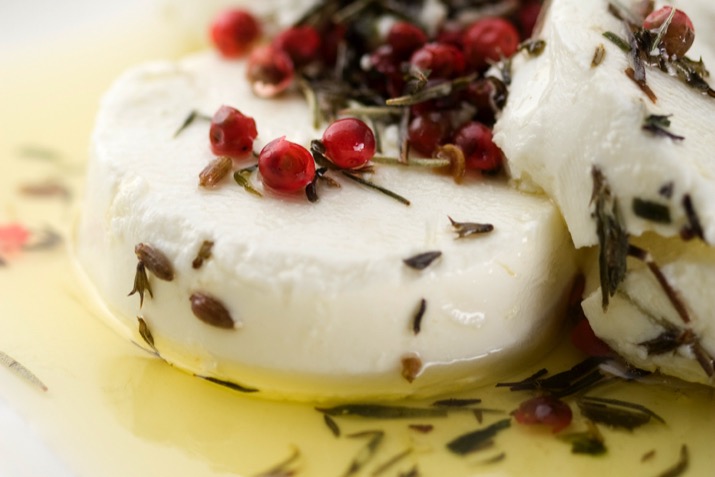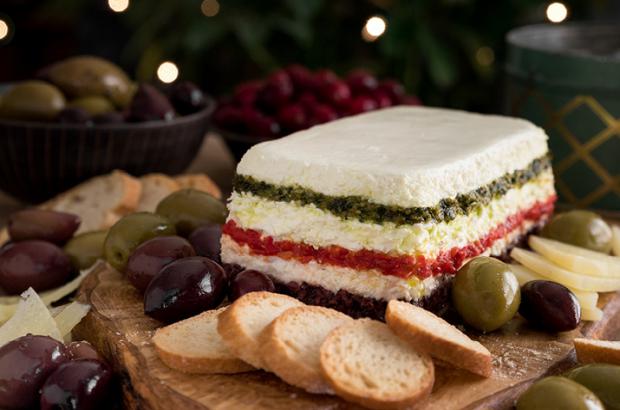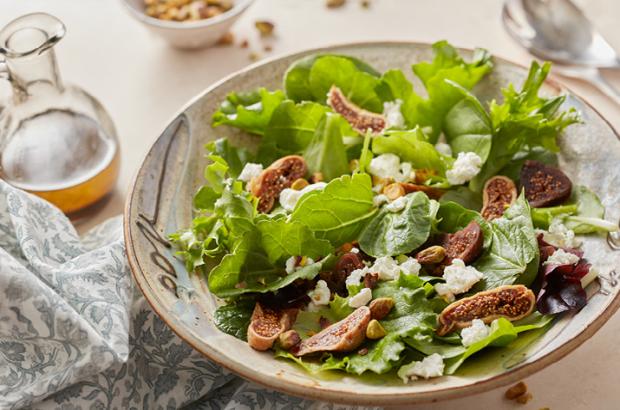Article
Goat Cheese

While now wildly popular, goat cheese isn't exactly a new invention. It's actually thought to be the oldest variety of cheese there is, with records of its existence in the Mediterranean dating as far back as 8,000 B.C.
Worldwide, goat cheese is more popular than cow's milk cheese, partly because goats are more adaptable to living environments than cows, making their milk more available.
France—which learned of goat cheese from the Saracens in the 8th century—now produces the largest variety of goat's milk cheeses, though goat cheese is also made in Scandinavia, Eastern Europe, the Middle East, North Africa and the United States.
Goat cheese is higher in calcium and vitamin A than cow's milk cheeses, and it's easier for those who are lactose intolerant to digest. Some goat cheeses are also lower in fat and calories than cow's milk cheeses.
As with cow's milk cheese, there's a wide variety of goat cheeses, from creamy to hard, mild to piquant—though most goat cheeses have a bit of tang to them. Colors include pure white, ivory, gray and golden cream.
Fresh goat cheese, or chevre, is the mostly widely known of the goat cheeses. It's a tangy cheese, with a bright flavor and soft texture—much like cream cheese, though it's sometimes a little drier. You're likely to find it rolled into little logs or rounds or shaped into pyramids. Fresh goat cheese is sold plain or combined with other flavors, such as pepper, chives, herbs, garlic, honey, sun-dried tomatoes, lavender, marigolds and fennel.
Aged goat cheese is firm to hard, with a more complex flavor than fresh goat cheese. It's often covered in ash to prevent it from drying out. Chevrot, Balencay and Selles sur Cher are examples of aged goat cheeses.
Brined goat cheese is salty and a little crumbly. Feta is a brined goat cheese.
Common varieties of cheese, like cheddar, Gouda, blue, Colby and jack cheese, can be found made with goat's milk instead of cow's milk.
It's easy to make a basic fresh goat cheese at home; it takes only lemon juice, goat’s milk, cheesecloth, and a couple of hours to strain the curds.
There's something about the creamy tang of goat cheese that seems to elevate any dish to gourmet status. It’s a wonderful complement to flavors as varied as pecans, fruits and bitter greens. Grilled Peach and Prosciutto Salad features tangy goat cheese, sweet peaches and savory prosciutto on a bed of greens, all drizzled with a Dijon dressing.
You can quickly craft an impressive appetizer with just a few ingredients when one of them is goat cheese. Goat Cheese Crostini with Walnuts is a prime example. If you've a bit more time to prepare an appetizer, be sure to try Fig and Goat Cheese Turnovers with Mixed Green Salad, in which sweet figs, simmered in wine, are combined with piquant goat cheese as a filling.
For an easy introduction to this cheese, try adding dollops of a smooth, fresh goat cheese in your morning eggs or a Summer Vegetable Quiche. Use it to elevate any omelet, like this Goat Cheese and Bell Pepper Omelet.
Goat cheese shakes up everyday pizza, too. Add it to an onion and spinach pizza with fresh tomatoes and oregano. In Caramelized Onion Pizza, mild, creamy goat balances the sweetness of caramelized onions and combines beautifully with provolone and mozzarella.
Firmer goat cheeses are excellent crumbled into a hearty salad of roasted butternut squash, farro and walnuts, or in a bright red, green and white Spinach and Strawberry Salad with Goat Cheese.
Goat cheese makes a wonderful addition to a cheese plate, and it's the perfect Dessert Cheese, especially when served with honey, preserves or candied/dried fruit. Try an exquisite French goat cheese like Bucheron on a cheese plate with apricot jam, fresh figs or slices of crisp apple.
Store soft goat cheese in a cold part of the refrigerator to retain maximum freshness and best texture. Goat cheese will absorb odors, so keep it in a tightly sealed container or wrap.
Firm goat cheese can be treated like cow's milk cheeses. Wrap it in waxed or parchment or cheese paper, then store in the refrigerator for up to two weeks. Goat cheese doesn't freeze well.













